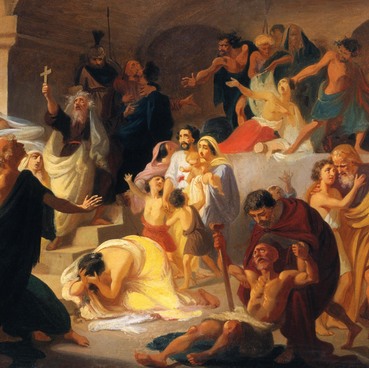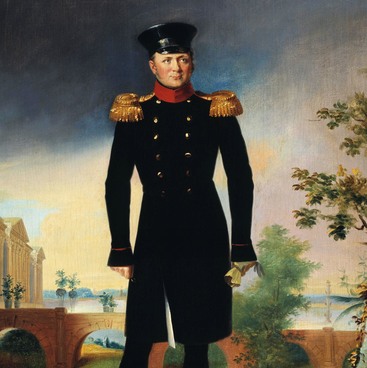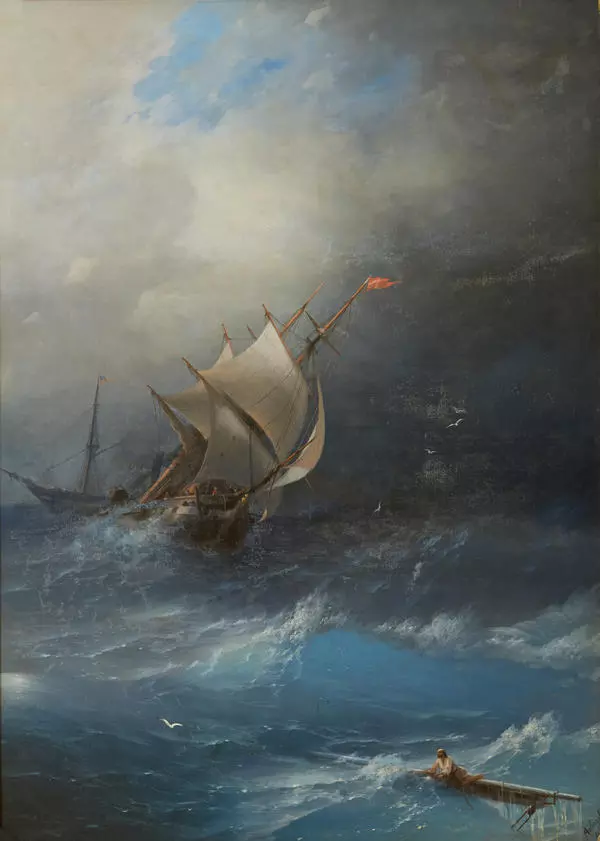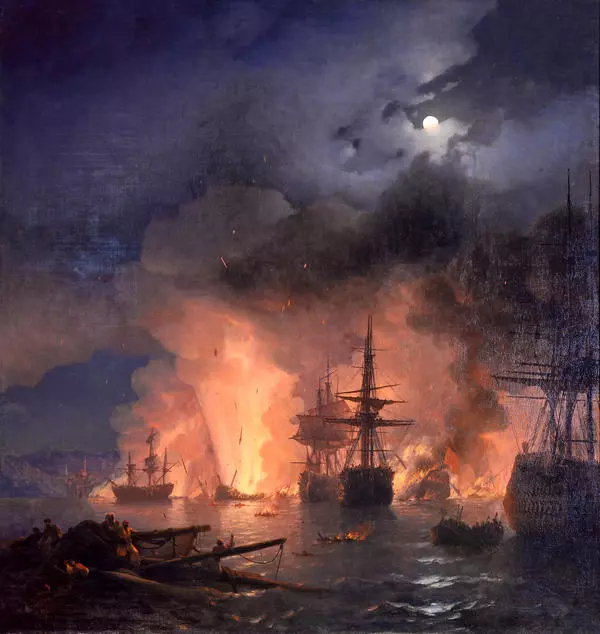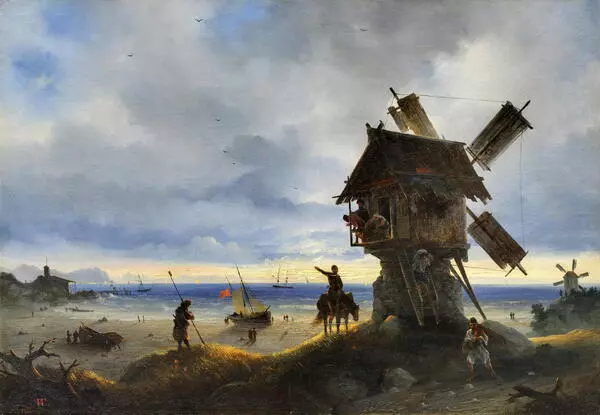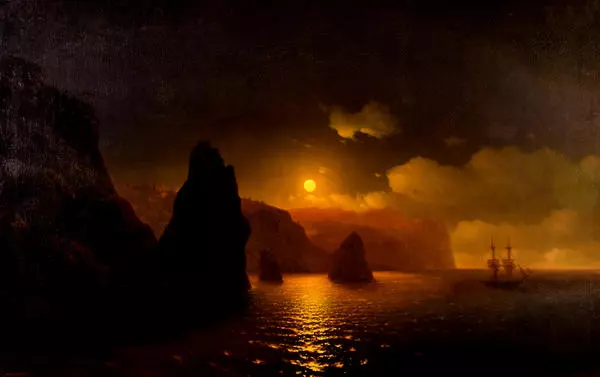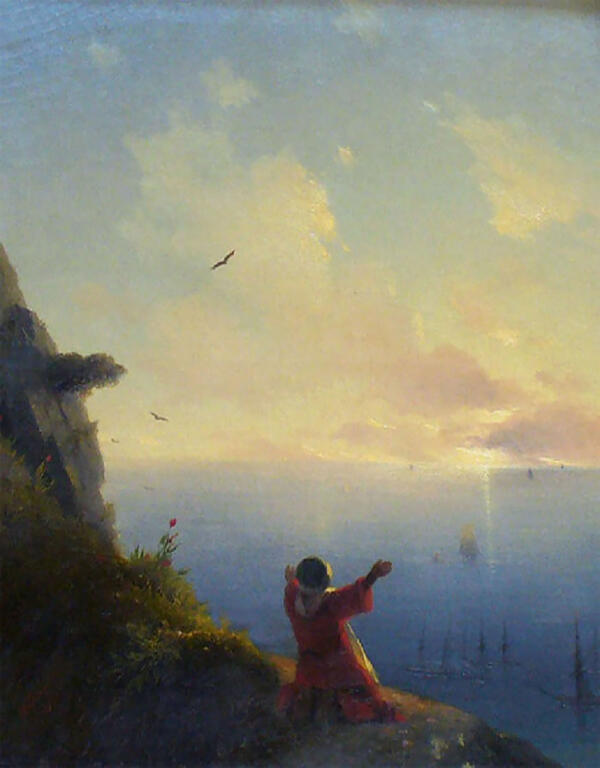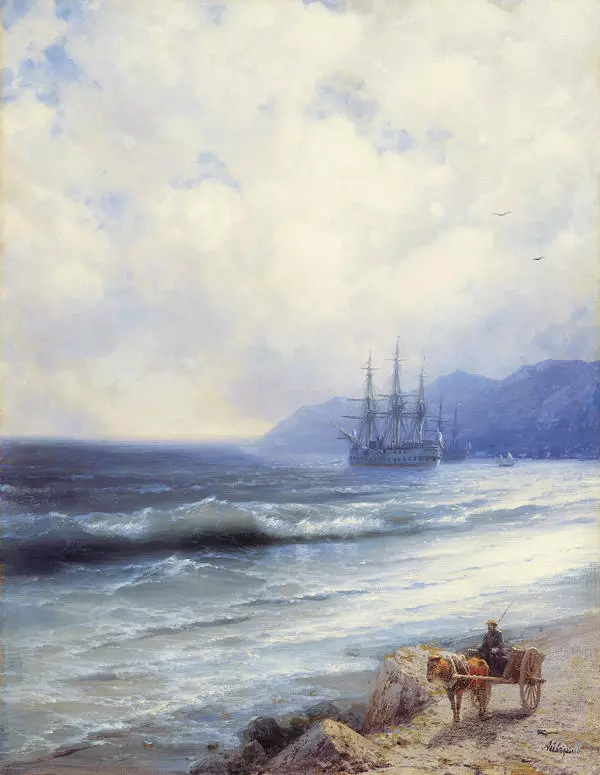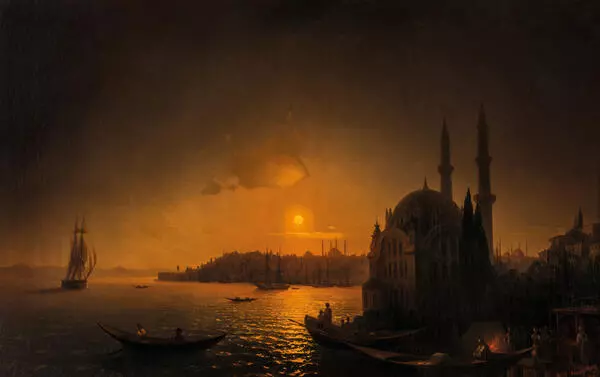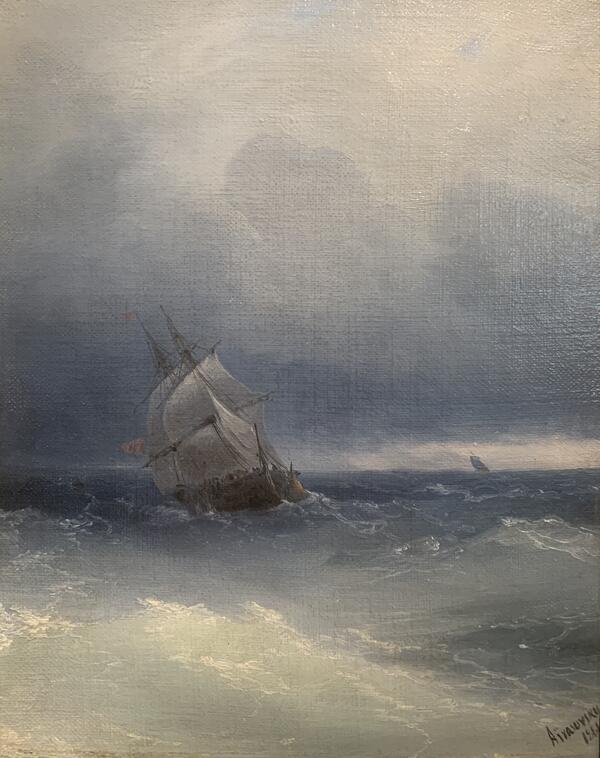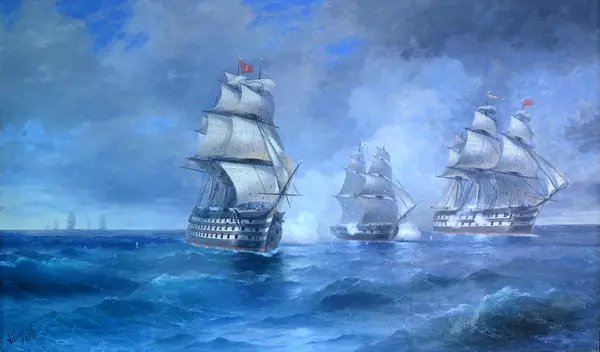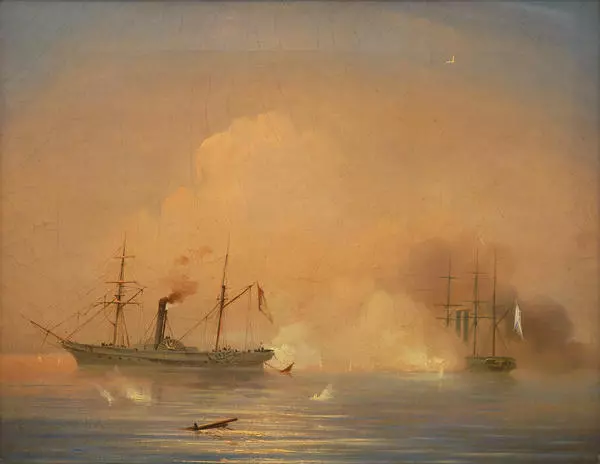Ivan Aivazovsky is probably the best-known Russian seascape painter. He was born in 1817 in the family of a bankrupt merchant in Feodosia. Young Aivazovsky started to show ability in arts very early: for instance, at the age of five he independently learned to play the violin. Per recommendation by Johann Ludwig Gross, a teacher of drawing from Simferopol, he was accepted into the St. Petersburg Academy of Art, where he began to study in 1833.
Only two years later, Aivazovsky, for his student works, was awarded a Smaller Silver Medal. Soon he was assigned to the class of the then fashionable seascape painter Philippe Tanneur. The latter prohibited the student to paint independently, however Aivazovsky disobeyed and displayed a few of his paintings at an Academy exhibition. Tanneur was so indignant that he complained of his student straight to Nicholas I, who personally ordered to withdraw all the student’s paintings from the exhibition. However, six months later Aivazovsky was pardoned, and in a few more months, the Academy adopted an unheard-of decision: Aivazovsky was conferred upon his degree two years ahead of the fixed time and was entitled to undertake a sponsored six-year trip to Italy.
The small painting Storm on the Sea of 1873 is close to the common knowledge of Aivazovsky as of a romanticist of the wave. The composition of the painting is driven by the intense rhythm of the caravan of clouds flying across the sky. A sinking boat is shown closer to the right edge of the canvas. It is being approached by a rescue boat with lifeguards struggling against sea waves.
This picture repeats one of Aivazovsky’s favorite subjects: fight between the man and the relentless sea. For example, a similar scene is painted in the famous picture The Ninth Wave. Aivazovsky was a very prolific painter: he painted a few thousand canvases over his life, often reproducing and modifying the same scenes. He was often criticized for that, while Anton Chekhov compared his painting speed with the productivity of Alexander Dumas. The painter himself explained his return to the same subjects by his desire to improve the slightest faults that only he could see and understand.
Only two years later, Aivazovsky, for his student works, was awarded a Smaller Silver Medal. Soon he was assigned to the class of the then fashionable seascape painter Philippe Tanneur. The latter prohibited the student to paint independently, however Aivazovsky disobeyed and displayed a few of his paintings at an Academy exhibition. Tanneur was so indignant that he complained of his student straight to Nicholas I, who personally ordered to withdraw all the student’s paintings from the exhibition. However, six months later Aivazovsky was pardoned, and in a few more months, the Academy adopted an unheard-of decision: Aivazovsky was conferred upon his degree two years ahead of the fixed time and was entitled to undertake a sponsored six-year trip to Italy.
The small painting Storm on the Sea of 1873 is close to the common knowledge of Aivazovsky as of a romanticist of the wave. The composition of the painting is driven by the intense rhythm of the caravan of clouds flying across the sky. A sinking boat is shown closer to the right edge of the canvas. It is being approached by a rescue boat with lifeguards struggling against sea waves.
This picture repeats one of Aivazovsky’s favorite subjects: fight between the man and the relentless sea. For example, a similar scene is painted in the famous picture The Ninth Wave. Aivazovsky was a very prolific painter: he painted a few thousand canvases over his life, often reproducing and modifying the same scenes. He was often criticized for that, while Anton Chekhov compared his painting speed with the productivity of Alexander Dumas. The painter himself explained his return to the same subjects by his desire to improve the slightest faults that only he could see and understand.
